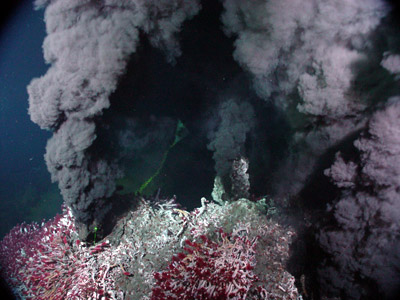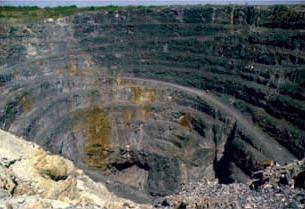A tectonic ridge is associated with a spreading center where magma from the bowels of the Earth reaches the surface where it is the driving force for plate tectonics. The same feature is also the home of black and white smokers the source of many mineral deposits. For the most part tectonic ridges are found in the ocean deeps usually a depth of about 12,000 feet, but an exception is made for Iceland Iceland Pacific Ocean , but that is caused by just the opposite environment where tectonic plates are plunging beneath other plates in subduction zones.
The smokers are the result of ocean water penetrating deep into the oceanic crust that is composed of basalt, and leaching out the various metal ions and expelling the from the surface and clouds of metal sulfides. These sulfides are deposited in a particular sequence depending upon their solubility in water copper and iron are usually the first sulfides that are deposits and the other metals are deposited according to the solubility of their sulfides.
Although deposits of this nature are formed in the depths of the ocean is theorized that because of plate movement these deposits can eventually be incorporated into continental plates. A good example of this type of deposits is the Kidd Creek Mine located in Timmins , Ontario Rouyn-Noranda , Quebec



No comments:
Post a Comment